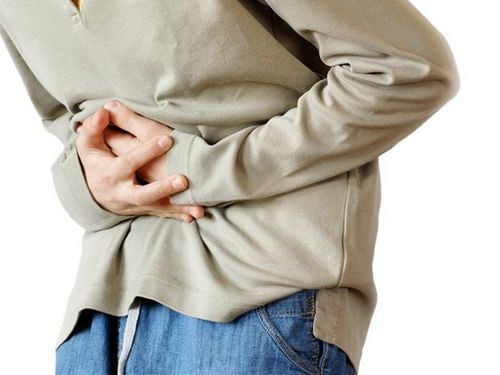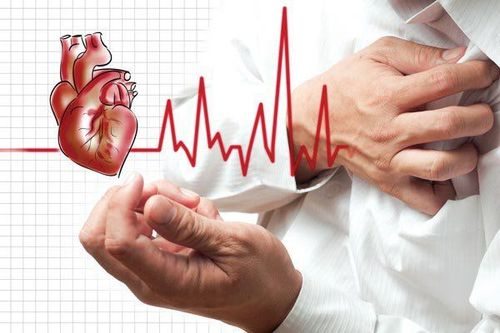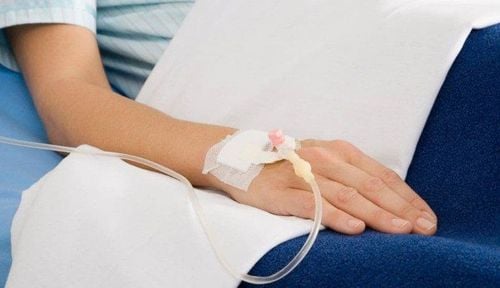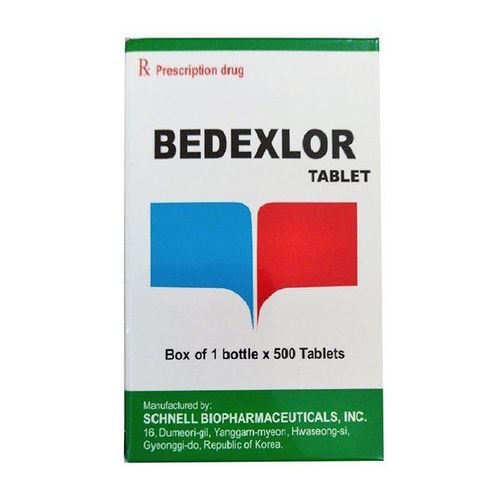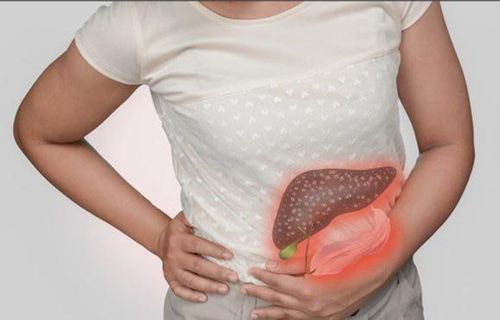This is an automatically translated article.
Article written by Doctor Nguyen Ngoc Phu - ICU Doctor - Intensive Care Department - Vinmec Times City International General Hospital
Emergency tracheostomy is a technique performed by an Ear - Nose - Throat specialist, performed before surgery on the face and neck, widely applied in the specialty of anesthesiology, resuscitation, emergency surgery. department and in trauma.
1. What is the emergency tracheostomy technique?
Emergency tracheostomy is creating an artificial airway through the cricothyroid membrane. This is a technique to open the airway quickly, especially in acute choking emergency. The cricothyroid membrane has relatively clear anatomical landmarks and is easiest to enter the airways. There are 2 types of techniques: cricothyroid puncture and cricothyroid opening Anatomical landmarks: The cricothyroid membrane is located between the thyroid cartilage and the cricoid cartilage, with a cricoid muscle. armor cover
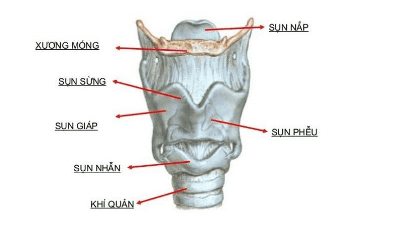
khí quản
1.1 When is emergency tracheostomy indicated? Acute respiratory failure, acute asphyxia, failed or contraindicated intubation Patients with maxillofacial trauma, cervical spine injury or multiple trauma 1.2 Contraindications to emergency tracheostomy No contraindications absolutely
Patients with diseases of the larynx such as cancer, epiglottitis Be careful with patients with blood diseases Children under 10 years old because of the small funnel shaped larynx, the smallest part is in the cricoid cartilage.
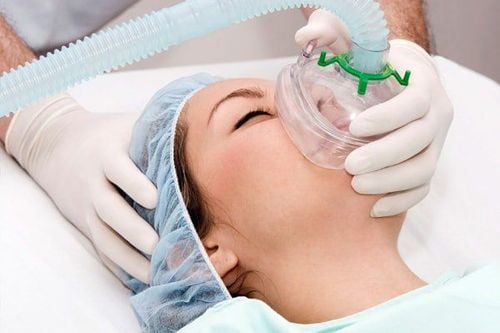
Bệnh nhân suy hô hấp cấp đặt nội khí quản thất bại được chỉ định mở khí quản cấp cứu
2.What to prepare when performing emergency tracheostomy?
2.1 Executor Doctor: 02 people, trained, technically proficient. Nursing: 02 nurses assisting doctors, trained in assisting doctors in tracheostomy. 2.2 Patient The patient lies on his back. Put a pillow under the neck or shoulder. If there is an injury to the cervical spine, do not use the pillow and immobilize the patient's head and neck. Local antiseptic Local anesthetic with xylocaine 2% 2.3 Instruments 2.3.1 Piercing the perithyroid membrane by direct puncture Syringe, in syringe, aspirate 2-3ml of 0.9% Sodium Chloride Needle: o 14 (14) -gauge) for adults o Needle No. 18 (18-gauge) for children Other tools: gloves, antiseptic, anesthetic.
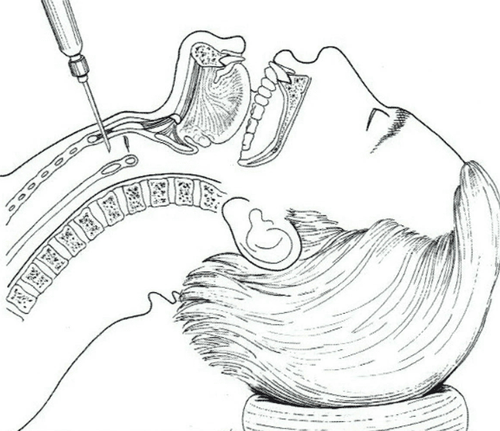
Chọc hút dịch khí phế quản qua màng nhẫn giáp
2.3.2 Incisional ring membrane opening with the MINITRACH kit Canuyn scalpel with 4mm inner diameter Lead barrel Endotracheal coupling.
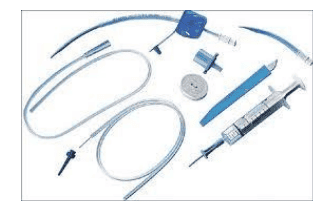
Bộ dụng cụ MINITRACH
2.3.3 Cataract opening with skin incision with MELKER kit Pre-aspirated syringe 2-3ml Natrichloride 0.9% Needle No.18 or catheter Scalpel Canuyn Curved dilator (guidewire)
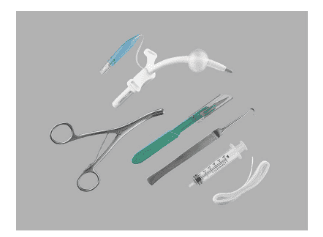
Bộ dụng cụ MELKER
2.3.4 Medical records Explain the technique to the patient and patient's family and sign the agreement to agree to the technique, the record of procedure monitoring.
3. How is tracheostomy performed?
3.1 Check the medical records Check the patient's medical records, the written consent to perform the procedure of the patient, the patient's family, the procedure monitoring note.
3.2 Re-examination of the patient Reassess that the patient's vital functions are safe for the procedure.
3.3 Performing the technique 3.3.1 Piercing the pericardial membrane with a direct puncture needle Antiseptic Locate the cricothyroid membrane, anesthetize the cricothyroid membrane Insert the needle into the pericardial membrane along the midline, at an angle of 45 degrees from With the body and the needle down, Use the syringe to poke the probe until air is aspirated Remove the syringe from the needle holder The patient can breathe spontaneously through the needle Or squeeze the balloon by inserting the internal joint of the endotracheal tube Manager No. 3-3.5 into the director of metal.
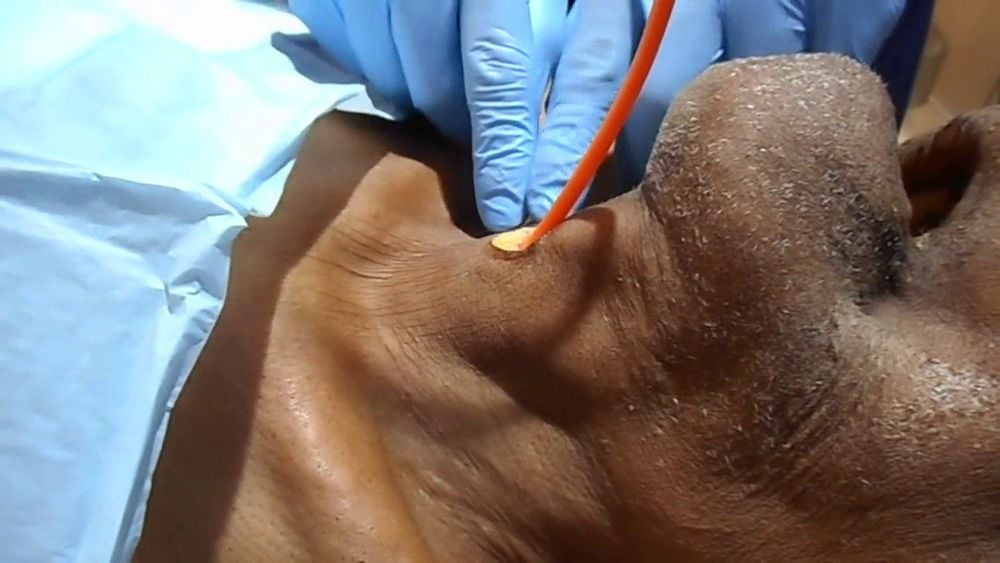
Chọc hút dịch khí phế quản qua màng nhẫn giáp
3.3.2 Open the ring membrane with skin incision with the MINITRACH kit Antiseptic Locate the cricothyroid membrane, numb the skin and anesthetize the trachea through the cricothyroid membrane Use a scalpel to make a skin incision. through the skin incision. When entering the trachea, insert the guide tube for a few more centimeters, then push the cannula to slide along the guide tube into the trachea and then withdraw the guide tube. Fixation of the cannula 3.3.3 Open the cricothyroid membrane with skin incision with the MELKER kit Locate the cricothyroid membrane, anaesthetize the skin, and numb the trachea through the cricothyroid membrane - Incision of the skin in a straight line along the midline of band 1 -1.5 cm Insert the needle with the syringe inserted through the cricothyroid membrane through the skin incision at a 45 degree angle to the body (pointing the needle towards the patient's leg) at the midline, aspirating while aspirating until air is released Remove the syringe , leave the needle, thread the guide wire through the catheter into the airway Withdraw the needle, leave the guide in place Cannula Withdraw the dilator and guide wire Fixed.
4. Complications and complications during emergency tracheostomy?
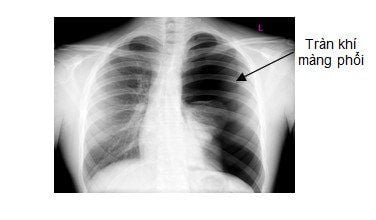
Tràn khí màng phổi là tai biến và biến chứng sớm có thể gặp khi mở khí quản cấp cứu
4.1 Complications and early complications Asphyxia or airway obstruction Bleeding at puncture site, skin incision Injury to larynx, blood vessels Perforation of trachea, esophagus, or mediastinal puncture Subcutaneous pneumothorax, pneumothorax Pulmonary, mediastinal, and tracheal intubation, incorrect tracheal intubation, vocal cord injury 4.2 Complications and late complications Subchondral and tracheal stenosis Cannus obstruction Loss of swallowing function Voice change Infection Late bleeding Air leak esophagus - esophagus Long open place. Vinmec International General Hospital is one of the hospitals that not only ensures professional quality with a team of leading doctors, modern equipment and technology, but also stands out for its examination and consulting services. and comprehensive, professional medical treatment; civilized, polite, safe and sterile medical examination and treatment space. Customers when choosing to perform tests and treat diseases here can be completely assured of the accuracy and high efficiency in the treatment process.
Please dial HOTLINE for more information or register for an appointment HERE. Download MyVinmec app to make appointments faster and to manage your bookings easily.




